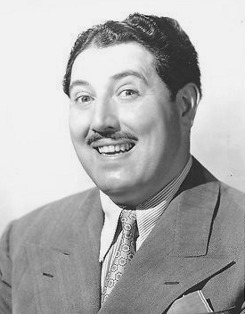
"The man with the action-packed expense account, America’s fabulous freelance insurance investigator, Johnny Dollar".
For over twelve years, from 1949 through 1962 (including a one year hiatus in 1954-1955), this series recounted the cases of Johnny Dollar. The name of the show derives from the fact that he closed each show by totaling his expense account, and signing it "End of report...
Yours Truly, Johnny Dollar".
As originally conceived, Johnny Dollar was a smart, tough, wisecracking detective who tossed silver-dollar tips to waiters and bellhops.
Dick Powell starred in the audition show, recorded in 1948, but withdrew from the role in favor of other projects. The role went instead to
Charles Russell. The show, for which Powell auditioned, was originally titled "Yours Truly, Lloyd London," although the name of the show and its lead character were apparently changed before the audition tape of December 6, 1948, was actually recorded.
The final episodes of Yours Truly, Johnny Dollar and Suspense, airing on CBS, are often cited as the end of the golden age of radio. The last episode of Johnny Dollar, "The Tip-Off Matter", ended at 6:35 p.m. Eastern Time on September 30, 1962, followed immediately by the final broadcast of Suspense.
With the first three actors to play Johnny Dollar — radio actor Russell and movie tough-guy actors
Edmond O'Brien and
John Lund — there was little to distinguish Johnny Dollar from other detective series at the time (Richard Diamond, Philip Marlowe and Sam Spade). While always a friend of the police, Johnny wasn't necessarily a stickler for the strictest interpretation of the law. He was willing to let some things slide to satisfy his own sense of justice, as long as the interests of his employer were also protected. The series ended in September 1954.
CBS Radio revived Yours Truly, Johnny Dollar in October 1955 with a new leading man, a new director, and a new format. The program changed from a 30-minute, one-episode-per-week affair to a 15-minute, five-nights-a-week serial (Monday through Friday, 8-8:15pm EST) produced and directed by radio veteran Jack Johnstone. The new Johnny Dollar was
Bob Bailey, (pictured) who had just come off another network detective series,
Let George Do It. With a new lead and 75 minutes of air time each week, it became possible to develop each storyline with more detail and with more characters. Almost all of the Johnny Dollar serials were presented by CBS Radio on a sustaining basis (unsponsored, with no commercials); only two of the 55 serials take time out for a sponsor's message.
Bob Bailey was exceptionally good in this format, making Johnny more sensitive and thoughtful in addition to his other attributes. Vintage-radio enthusiasts often endorse Bailey as the best of the Johnny Dollars, and consider the 13-month run of five-part stories to be some of the greatest drama in radio history. The serial scripts were usually written by Jack Johnstone, "John Dawson" (a pseudonym for E. Jack Neuman), Les Crutchfield, or Robert Ryf, Blake Edwards also contributed several scripts and the show was always produced and directed by Johnstone. The show featured an excellent stock company of supporting actors, including Virginia Gregg, Harry Bartell, Vic Perrin, Lawrence Dobkin, Parley Baer, Howard McNear, John Dehner, Barney Phillips, Lillian Buyeff, Tony Barrett, Don Diamond, Alan Reed, and Forrest Lewis. Movie character actors appeared occasionally, including Jay Novello, Hans Conried, Frank Nelson, Leon Belasco, William Conrad, Edgar Barrier, and Billy Halop.
In late 1956 CBS Radio retooled the show, which reverted to a weekly half-hour drama, airing on late Sunday afternoons. Bob Bailey continued in the leading role until 1960 (and wrote one episode,
"The Carmen Kringle Matter").
The final episodes of Yours Truly, Johnny Dollar and Suspense, airing on CBS, are often cited as the end of the golden age of radio. The last episode of Johnny Dollar, "The Tip-Off Matter", ended at 6:35 p.m. Eastern Time on September 30, 1962, followed immediately by the final broadcast of Suspense.
Sources-
Wikipedia
Archive.org
 Dark Venture was an American radio anthology thriller series. This program was created by the director Leonard Reeg and the producer J. Donald Wilson. John Lake narrated the show. It originated at ABC's new KECA facilities. The show ran for 52 episodes between February 1946 and February 1947.
Dark Venture was an American radio anthology thriller series. This program was created by the director Leonard Reeg and the producer J. Donald Wilson. John Lake narrated the show. It originated at ABC's new KECA facilities. The show ran for 52 episodes between February 1946 and February 1947.






































